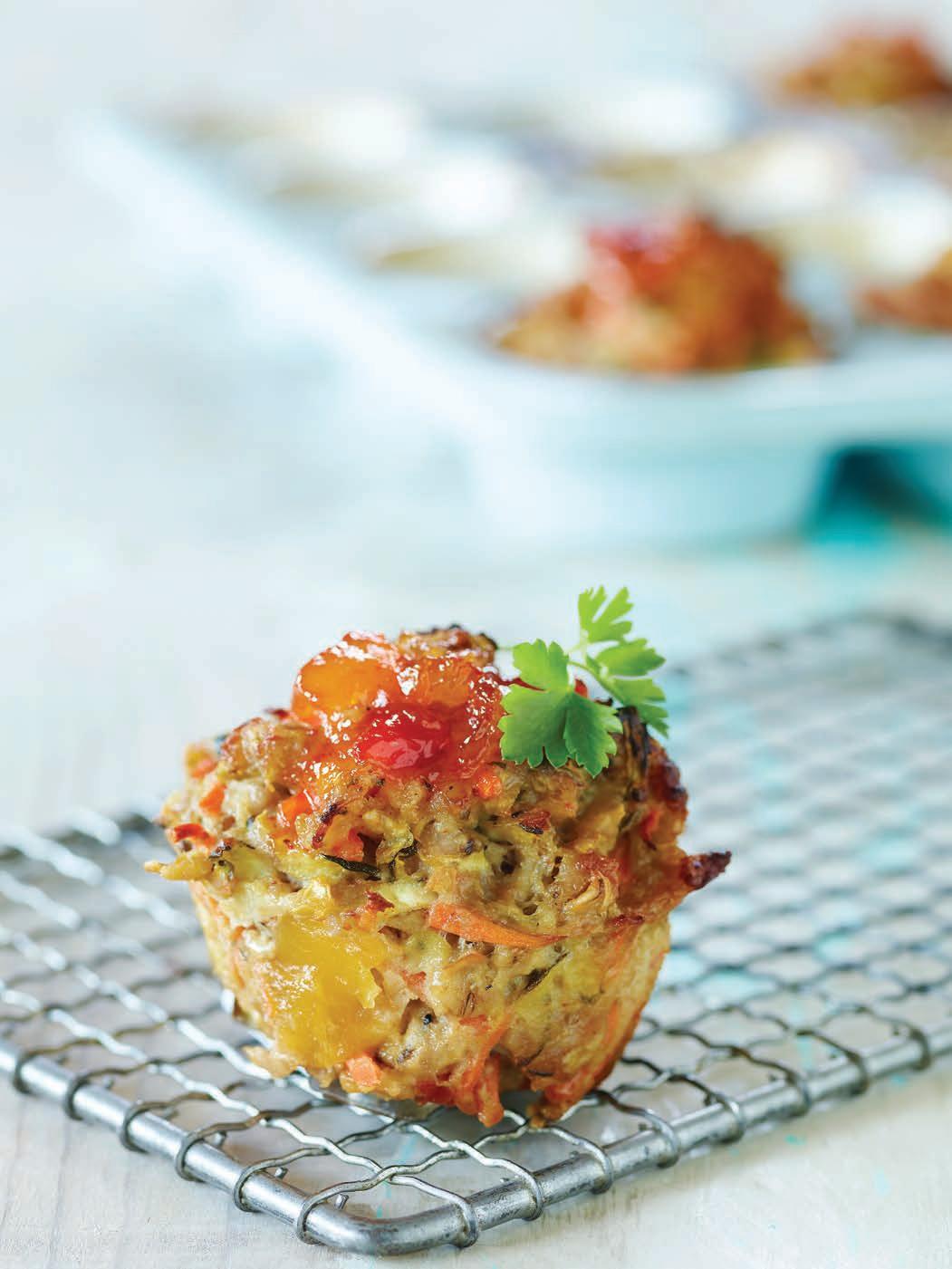
5 minute read
The ABCs of vitamin A
The term “vitamin A” is more complicated than you think. There are two dietary forms:
Preformed vitamin A, found in fish, eggs, dairy, and meat, doesn’t require conversion and is readily available and usable by the body.
Advertisement
Provitamin A carotenoids, found in plant foods, are converted by the body into retinol, the active form of vitamin A.
Beta-carotene is the primary provitamin A carotenoid. Unfortunately, the conversion process is highly inecient, and only a small percentage of beta-carotene gets transformed into vitamin A. The process depends on a number of factors, especially healthy gut function and the presence of other nutrients including riboflavin, niacin, iron, zinc, and protein.
Not to say that’s entirely bad. Betacarotene that’s not converted into vitamin A circulates through the body and acts as an antioxidant, protecting the cells from free radical damage, lowering inflammation, and reducing the risk of cancer, heart disease, and other diseases.
Are You Getting Enough?
Unless you’re a vegan, focus on getting preformed vitamin A in your diet from organ meats, beef, chicken, turkey, cheese, egg yolks, fish, and cod liver oil.
If you don’t eat animal products, make sure you’re getting plenty of beta-carotene in your diet. Focus on orange/red fruits and vegetables, such as sweet potatoes, carrots, acorn squash, butternut squash, pumpkin, apricots, cantaloupe, and red peppers. Leafy greens such as kale, spinach, and chard are also rich in beta-carotene. Eat them with fat to enhance absorption, and include cooked varieties—some research suggests that cooking fruits and vegetables increases their content of beta carotene. Try these tricks for getting more carotenoids in your diet:
* Carrots. Cook finely shredded carrots, onions, and garlic in tomato sauce with olive oil, then purée for a carotenoidpacked pasta sauce. Thinly slice carrots on the diagonal, toss with melted coconut oil and coarse salt, and roast until crispy. Drizzle baby carrots with olive oil, sprinkle with minced rosemary and black pepper, and bake until tender.
* Spinach. Sauté chopped spinach, onion, garam masala, and cumin in coconut oil, then stir in cream and cubes of paneer cheese and warm through (use coconut milk and cubes of tofu for a vegan option). Purée steamed spinach with avocado and artichoke hearts for a cream dip. Toss baby spinach leaves with thinly sliced red onions, sautéed mushrooms, and sliced hard-boiled egg, then drizzle with a warm mustard vinaigrette.
* Butternut squash. Toss butternut squash cubes with maple syrup, coconut oil, cinnamon, and cayenne, and roast until tender. Purée thawed frozen butternut squash with garlic and cream, then warm through for an easy sauce. Halve a butternut squash, roast until tender, then stuff with quinoa, chickpeas, and minced sautéed greens.
* Cantaloupe. Toss diced cantaloupe, red pepper, cucumbers, onion, and jalapeño pepper with lime juice and olive oil for a simple salsa. Sprinkle cantaloupe cubes with chili powder and lime, then toss with arugula, spinach, fresh basil, and olive oil. Purée cantaloupe with coconut milk and fresh mint leaves, then freeze in an ice cream maker.
* Sweet potatoes. Sauté diced sweet potato and onions until tender; stir in black beans, thawed frozen corn, avocado cubes, and minced cilantro, and serve in taco shells. Use a spiralizer to make sweet potato noodles, then sauté in olive oil with minced onions, sage leaves, and Parmesan cheese.
* Apricots. Toss sliced apricots with vanilla extract and honey, top with ground almonds and oats, and bake until bubbly. Halve apricots, remove pits, add a dollop of vanilla yogurt, and sprinkle with minced basil. Toss quartered apricots with baby spinach leaves, pistachios, and crumbled goat cheese, and drizzle with vinaigrette.
* Watercress. Sauté watercress, leeks, garlic, and minced red chili peppers in sesame oil, then stir in water chestnuts and tamari. Wrap watercress, avocado slices, red bell pepper, and hummus in a whole-wheat tortilla. Toss watercress, orange segments, and jicama cubes with olive oil and lime juice.
Grain-free Carrot Cake with Yogurt-Cream Cheese Frosting
Serves 12
This high-protein, grain-free cake is frosted with a mixture of cream cheese and yogurt, for a sweet, healthy twist. The frosting is soft; if you like it firmer, increase the cream cheese to yogurt ratio. We made ours in a loaf pan for ease. For a layered cake, double the recipe and bake in two 8-inch round pans. Experiment with spices and other additions: cardamom, pecans, coconut, and currants are all delicious alternatives. Or use sunflower seeds for a nut-free version.

Ingredients
¼ cup melted coconut oil, plus extra coconut oil for greasing pan
1¾ cups fine almond flour, plus additional for dusting pan
3 medium to large carrots
1½ tsp. baking powder
1 tsp. sea salt
1½ tsp. ground ginger
1 tsp. ground cinnamon
¼ tsp. ground nutmeg
3 large or 4 medium eggs
¾ cup coconut sugar 1
tsp. vanilla extract
½ cup chopped walnuts, plus
¼ cup whole walnuts to decorate
¼ cup golden raisins
Frosting
4 oz. cream cheese at room temperature
½ cup organic powdered sugar*
¹⁄ ³ cup Greek yogurt
1 tsp. vanilla extract
Pinch of salt
1. Preheat oven to 350°F. Grease 8x4-inch loaf pan with coconut oil, then dust with almond flour. Shake out excess.
2. Peel and coarsely shred carrots. Squeeze shredded carrots firmly to release as much liquid as possible (should make about 1½ cups lightly packed shredded carrots). Combine in medium bowl with walnuts and raisins; set aside.
3. In large bowl, whisk remaining almond flour, baking powder, salt, ginger, cinnamon, and nutmeg.
4. In stand mixer, or using handheld electric mixer, beat eggs and coconut sugar until light and creamy and doubled in volume, 4–5 minutes. Beat in vanilla extract and remaining coconut oil.
5. With mixer on lowest setting, add half the flour mixture, beating until well combined. Add half the carrot mixture, and beat until combined. Repeat with remaining flour and carrot mixture.
6. Spoon batter into prepared loaf pan and smooth top. Bake on middle rack about 35 minutes, until golden and tester inserted into the center of loaf comes out clean. Remove from oven and let cool 15 minutes. Run butter knife along edges of pan to release sides, and invert onto cooling rack. Let cool completely before frosting (cake may be made in advance).
7. To make frosting: In stand mixer or using hand-held mixture, beat cream cheese and powdered sugar on medium-high until smooth, scraping down sides as needed. Reduce speed to low, and beat in yogurt, vanilla, and salt. Increase mixer speed and beat until fluy, 3–4 minutes. If mixture is very soft, chill 1 hour to firm it up.
8. Transfer cake to serving platter. Spread frosting evenly over top and sides of cake, and decorate with walnuts. Serve immediately, or refrigerate until ready to serve.
Per serving: 250 cal; 7g prot; 19g total fat (5g sat fat); 18g carb; 45mg chol; 300mg sod; 3g fiber; 11g sugar
*For a sugar-free alternative, try NOW Foods Organic Confectioner’s Erythritol Powder.





